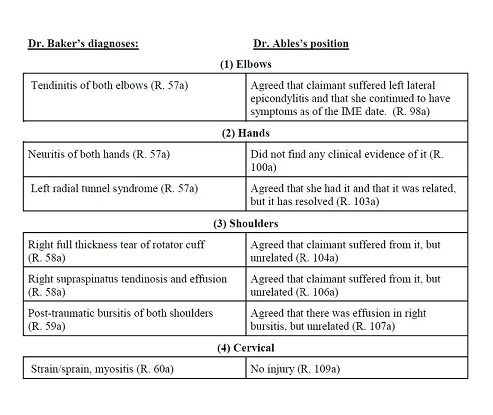In my last post, I noted that after years of reviewing statements of facts that were little more than witness-by-witness summaries, the New Jersey and Pennsylvania courts amended their rules to admonish attorneys to provide chronological summaries. Even a good chronological development of the facts may, however, be inadequate to educate the reader about the disputes in the case. This is particularly true in cases involving dueling experts who have divergent opinions about the issues before them. Courts can easily become confused by long summaries of testimony that do not pinpoint the conflicts. One easy way to summarize testimony and isolate the divergences is through the use of the dispute chart.
Suppose, for example, two physicians have given different opinions about injuries or the lack thereof to different body parts. One might summarize their testimonies in narrative form. The following chart gives the reader a ready reference point, to which he can repeatedly turn has he reads the balance of the brief:
For another example, let us assume that in a workers’ compensation case you wish to show that the claimant made inconsistent statements to various treating physicians and in her in-court testimony. If the records and testimony are in the record, you can summarize them in the following manner:
The pinpoint citations to the record allow the reader to go back and forth between the brief and record without losing his place. A chart of this variety can turn a confused narrative into an easily digested summary of the factual issues.



Recent Comments